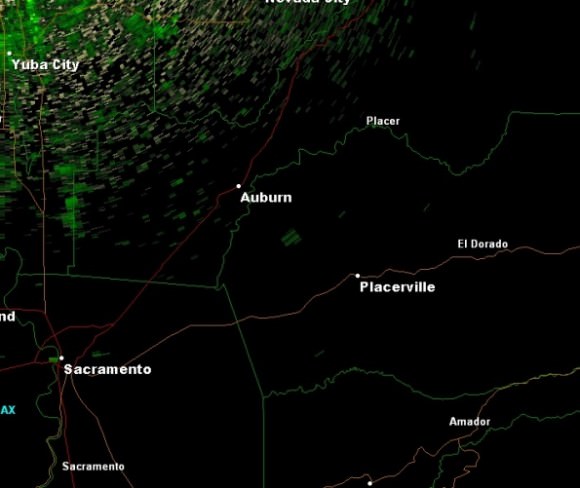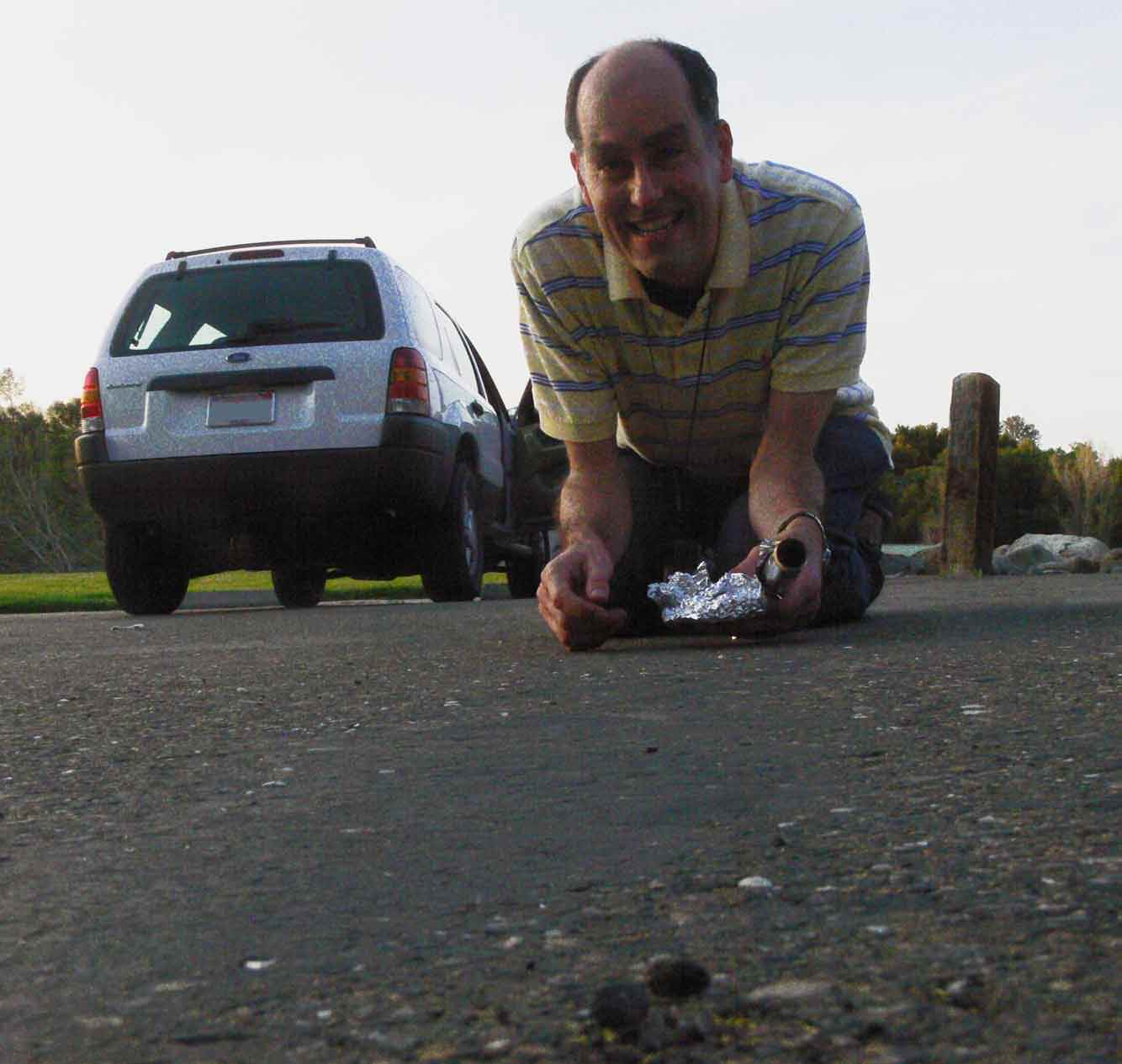[/caption]
Meteorite hunters have been successful in locating fragments from the huge meteor visible in the daytime skies over California last weekend. One of the successful hunters was Peter Jenniskens, an expert in meteors and meteorites, perhaps best known for retrieving the fragments of asteroid 2008 TC3 which fell in Sudan in 2008. Astronomer Franck Marchis wrote in his Cosmic Diary blog that Jenniskens realized the size of the California meteor was very similar to 2008 TC3, and so fragments should have reached the surface, just like they did in 2008.
Jenniskens went out searching and found a four-gram fragment of the meteor in a parking lot in Lotus, California.
Update: NASA and the SETI Institute are asking the public to submit any amateur photos or video footage of the meteor that illuminated the sky over the Sierra Nevada mountains and created sonic booms that were heard over a wide area at 7:51 a.m. PDT Sunday, April 22, 2012.
Marchis wrote that several scientists from the Bay Area met at NASA Ames Research Center on April 24 to discuss a strategy for a search campaign, examining a radar data map which showed that dozens of fragments from the 100g to 1 kg range may have reached the ground.
Jenniskens said the fragment he found was a Carbonaceous Chondrites from the CM group of meteorites, “a rare type of primitive meteorite rich in organic compounds,” he said.
“We are very interested in this rare find,” said Greg Schmidt, deputy director of the NASA Lunar Science Institute. “With the public’s help, this could lead to a better understanding of these fascinating objects.”
Several other fragments were found, the first one by noted meteorite hunter Robert Ward.
“Getting fresh fragments of meteoroids, called meteorites, is key for astronomers to understand the composition of those remnants of the formation of the solar system,” Marchis wrote. “Fresh fragments are unaltered by the Earth’s weather and erosion processes, so they are pristine samples which can be used to detect organic materials for instance.”
Photos and video footage would help the scientists to better analyze the trajectory of the meteor and learn about its orbit in space. This information will also help scientists to locate the places along the meteor path where fragments may have fallen to the ground.
People who have photos or video of the meteorite are asked to contact Jenniskens at [email protected].
Marchis noted that a storm is heading towards the region and rain could alter the remaining fragments. So if you live nearby, consider heading out to take a look. Here is the radar map:

Marchis also said that if anyone has access to security camera footage taken on April 22, 2012 in the area of the fireball sighting, it may be useful to check them to see if the fireball was visible. “Astronomers could use them to pin down the site of the fall, maximizing the hunt for fragments,” he said.


The cover photo to this article brings a song to mind…’What would you do.. for a Klondike bar…’
4 gram fragment in a parking lot – the image shows a bigger chunk than that. Would it be a typo for 400grs?
Not the tin foil in his hand. The rock is black still on the ground at bottom of photo.
Meteorites are dense, but not that dense.
Hard to tell by the perspective of the photo, but the black stone in the foreground would be it – at about the size of a die (dice).
If it were solid metal the size of a walnut, it would be ~100 grams.
Generally speaking, for a stone meteorite, which these are, to be 400 gms it would be in the vicinity of a man’s fist-size. The variation would depend on the metal content.
They think it’s a CM meteorite which means it is much lighter than most meteorites (and most earth rocks its size), so 4 grams is correct (not a typo). Also, Lord Haw Haw mentioned a metal detector, but CM meteorites don’t have enough iron in them to set off the metal detector, so this would be a very difficult search.
They think it’s a CM meteorite which means it is much lighter than most meteorites (and most earth rocks its size), so 4 grams is correct (not a typo). Also, Lord Haw Haw mentioned a metal detector, but CM meteorites don’t have enough iron in them to set off the metal detector, so this would be a very difficult search.
Coincidentally, it was in this very locale (Sutter’s Mill) that James W. Marshall discovered gold back in 1848.
It is estimated fragments may be dispersed over a 10-mile area thus an easy methodology to employ is to use a metal detector for the search process. Nice find Peter!….. you have ticked all the boxes once again Nancy with up-to-date reportage.